Hiroshima: New Soccer Stadium Invigorates City Center; near Peace Memorial Park, Hiroshima Castle
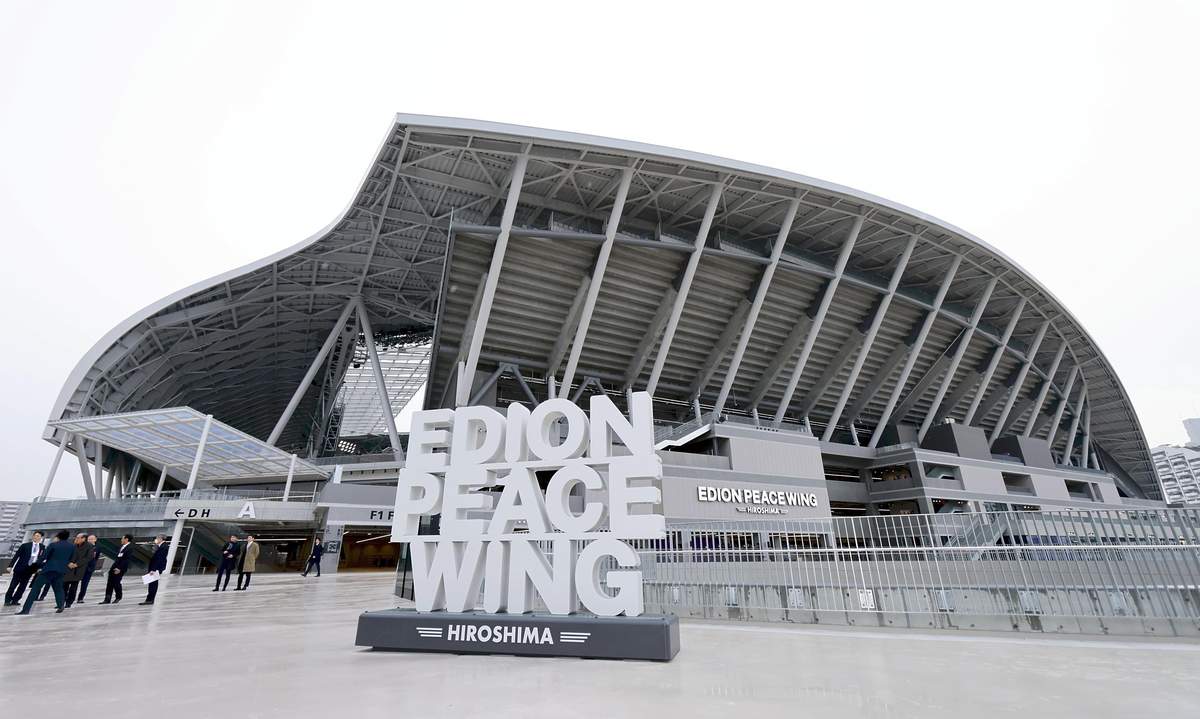
Edion Peace Wing Hiroshima
12:00 JST, December 14, 2024
HIROSHIMA — Bustling with spectators, a soccer stadium that opened in the heart of Hiroshima in February this year is playing a major role in invigorating the city center. A soccer stadium sitting in the center of a major city is rare in Japan, and attendance this year at Edion Peace Wing Hiroshima, home to Sanfrecce Hiroshima of Japan’s top-tier J1 League, was a record for the team.
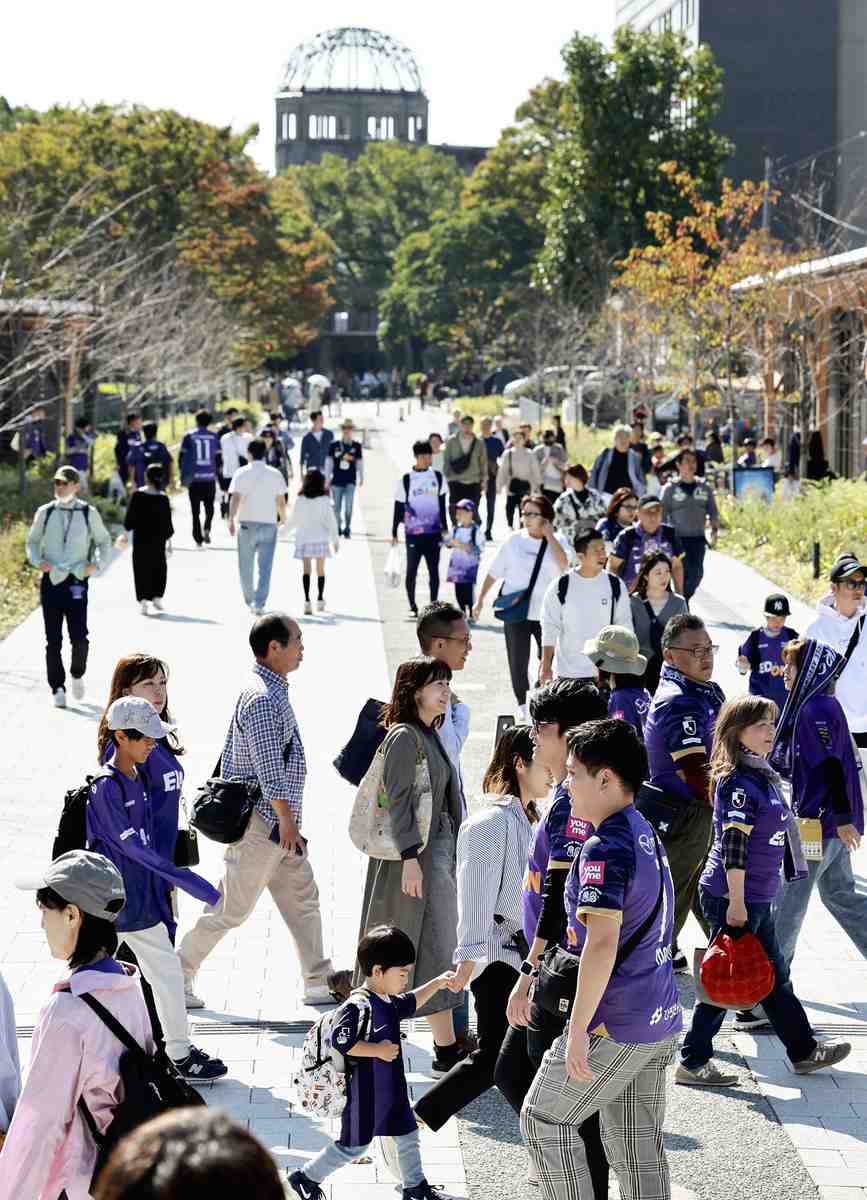
A street is crowded with soccer supporters on Nov. 3 in Hiroshima.
Near memorial park
People clad in Sanfrecce purple enjoyed buying goods and eating food at shopping streets and tourism spots on Nov. 3, the day of a match between Sanfrecce and Kyoto Sanga.
According to a person connected to a shopping district near the stadium, the number of customers on match days is more than double a usual day. “[The stadium] has a plaza and shops, so it is possible to spend the entire day there,” said Shohei Mizota, 32, who manages a restaurant in Hiroshima.
The about 28,500-capacity stadium sits in a park located in the center of Hiroshima. It is 15 minutes by foot from the Hiroshima Peace Memorial Park and Hiroshima Hondori Shopping Street. The stadium is also connected by a pedestrian deck to the area around Hiroshima Castle — another famous tourist spot. Rather than being built in such a desirable location, stadiums in Japan are often located in sports parks on the outskirts of cities. The stadium, which is owned by the Hiroshima municipal government and administered by Sanfrecce, cost about ¥28.5 billion to build.
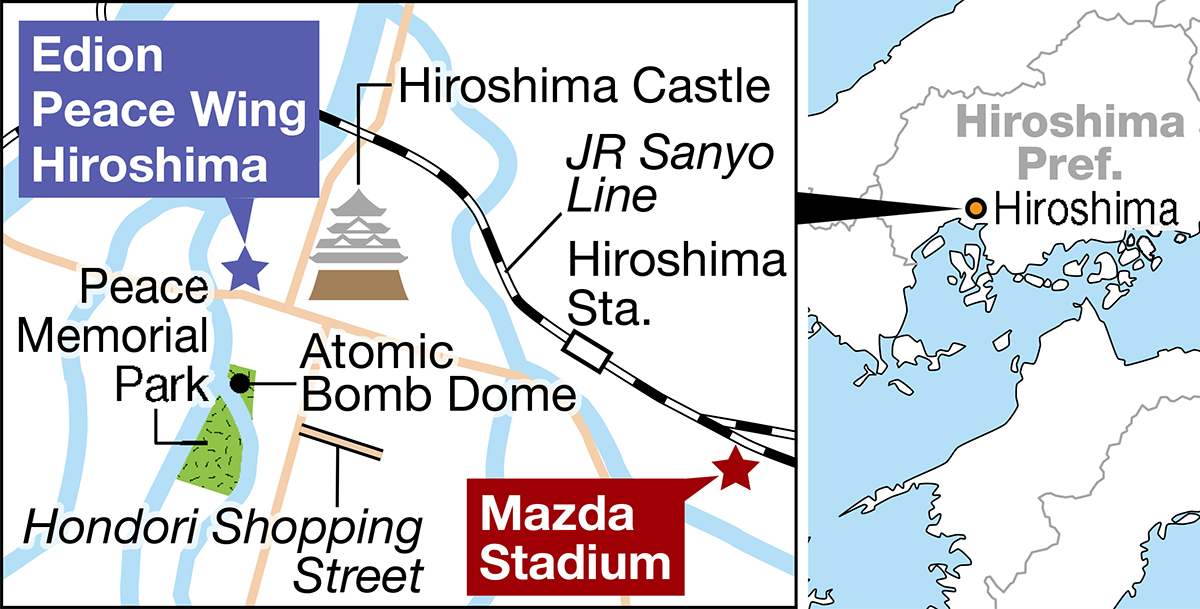
Serious discussions on building a new stadium began in Hiroshima in the 2010s. Several locations, such as a park in a coastal area, surfaced as candidates, but the soccer club insisted on constructing the stadium in the city center, close to landmarks such as the Atomic Bomb Dome. Club Chairman Masataka Kubo, who engaged in negotiations with local governments and other related entities, recalled the days, saying, “It was important for us to unite the place of fun, the stadium, with the place of repose, the Peace Memorial Park, to brighten up Hiroshima.”
Full house
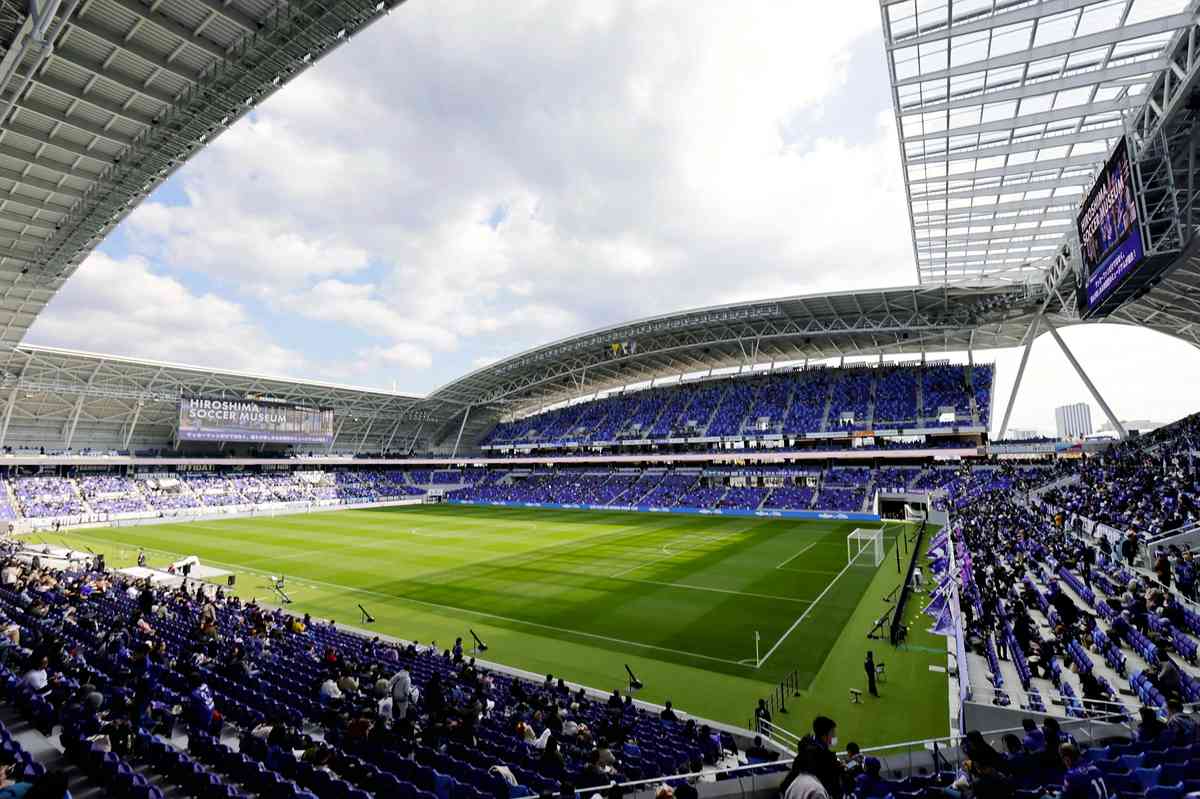
The first audience at Edion Peace Wing Hiroshima in February
Sanfrecce’s previous stadium, used through last season, was about 40 minutes from the city center by public transport. The average attendance of home games was 16,128 last season, and some supporters would come by car just to watch the games and then leave. This season, league matches at the new stadium have all sold out, except for one midweek game. The average attendance has soared to 25,526 as of Nov. 16. In total, 459,474 people attended home matches so far this season, breaking the previous record of 378,195 set in 1994. The club’s sales are expected to reach ¥7 billion, significantly exceeding last season’s ¥4.2 billion.
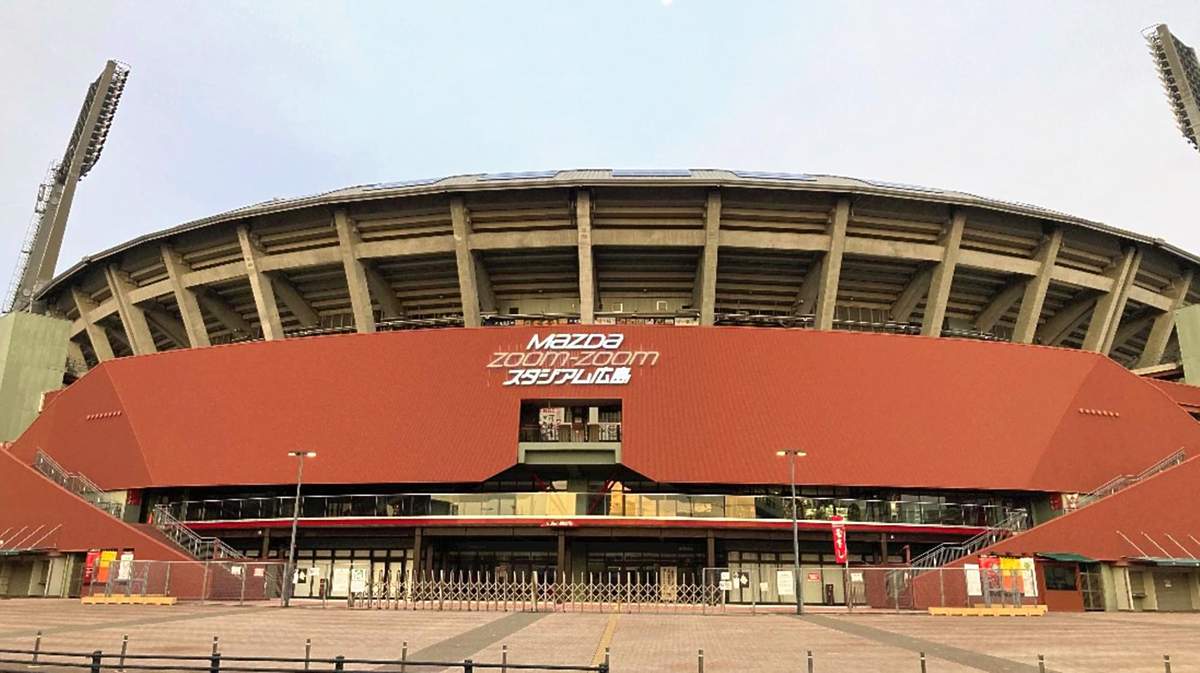
Mazda Stadium
On the eastern side of JR Hiroshima Station, there is another major stadium. Home to pro baseball club Hiroshima Toyo Carp, Mazda Stadium hosts about 2 million spectators per year. The Hiroshima prefectural government has positioned the two areas — the one containing JR Hiroshima Station and Mazda Stadium and the one containing Edion Peace Wing — as the core of urban revitalization works.
“We want [Edion Peace Wing] to lead to the invigoration of the prefecture, as many people visit the stadium from inside and outside the prefecture,” said Masahiko Mizumoto, an official of the prefectural government in charge of creating attractions in urban areas.
“We want to play a part in the development of Hiroshima, together with Mazda Stadium in the east,” said Sanfrecce President Shingo Senda.
Fostering pride, quick economic benefits for cities
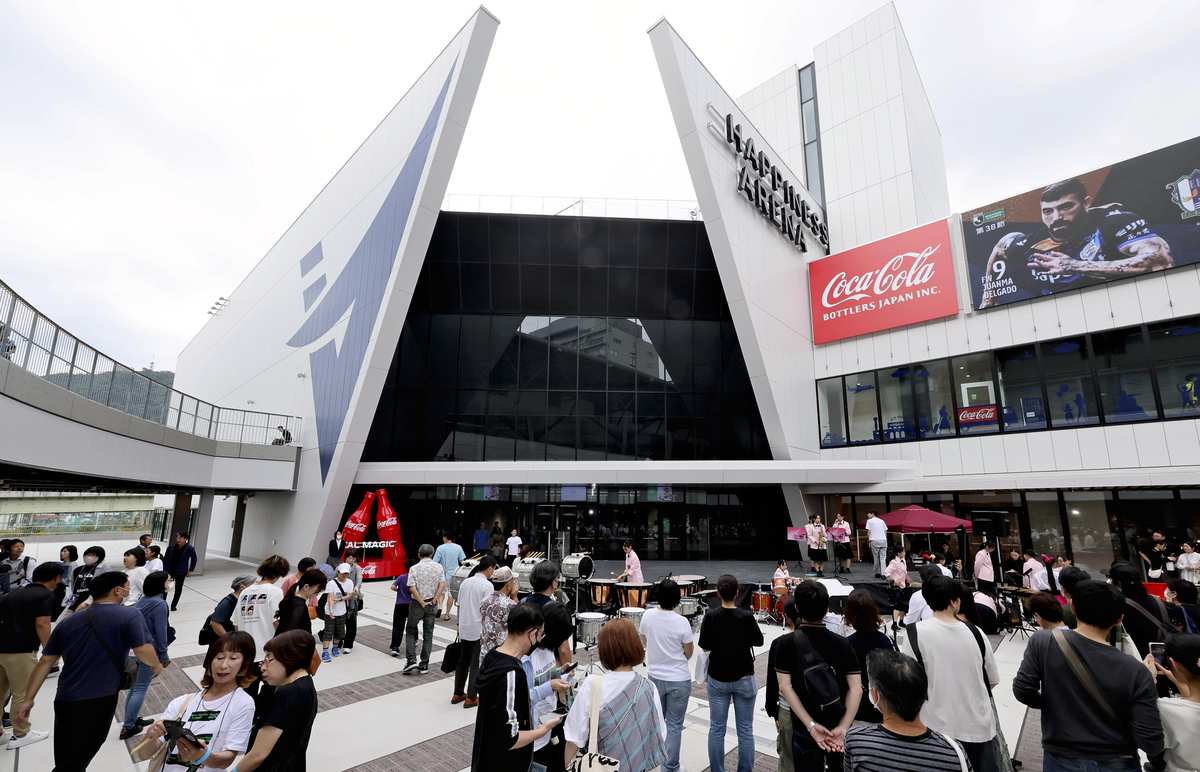
Happiness Arena in Nagasaki Stadium City in Nagasaki in October
Moves to construct multipurpose stadiums and arenas capable of holding different types of events, such as music concerts, in city centers are spreading in Japan. They are expected to serve as hubs for regional revitalization by attracting people throughout the year.
In Nagasaki, a complex that houses a soccer stadium, arena and commercial facilities opened near JR Nagasaki Station in October. Named Nagasaki Stadium City, the complex is the home to V-Varen Nagasaki, currently playing in the J2 league, and Nagasaki Velca of the professional basketball B-League.
The complex was developed under the initiative of the private sector, led by the Japanet Group, which owns both clubs. The complex also contains the first branch of some shops in Nagasaki, as well as a cram school and childcare facility. A hotel is located next to the soccer stadium, and visitors can watch games from its pool.
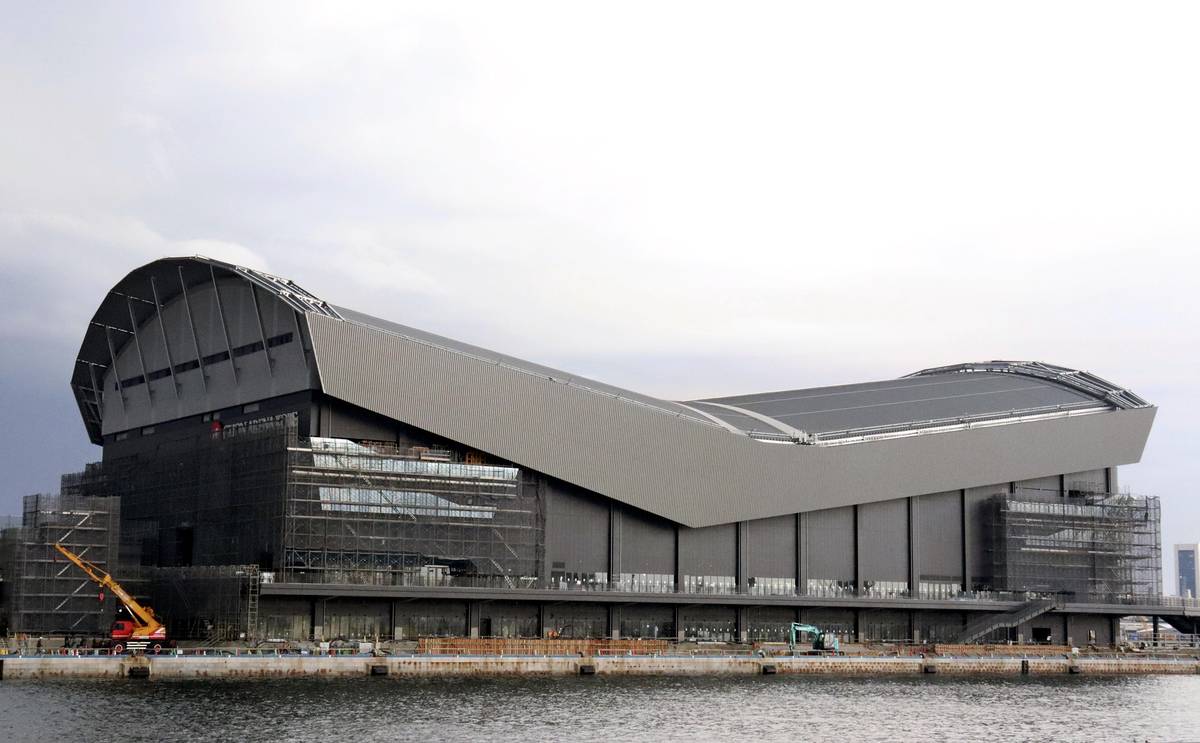
Glion Arena Kobe under construction in Kobe in September
In Kobe’s Chuo Ward, Glion Arena Kobe, the home of B-League club Kobe Storks, is set to open in April. It is located within walking distance of JR Sannomiya Station. A VIP area will be established in the arena, where dishes made using local ingredients will be offered to visitors.
Isao Uebayashi, an associate professor at Otemon Gakuin University who specializes in sports and urban culture, talked about the benefits of building stadiums and arenas in city centers, saying: “It fosters citizens’ pride for the cities where they live and deepens the bonds between each other. Being in the center of the city will bring economic benefits more quickly. The facilities are also expected to become tourist hubs.”
Related Tags
"Features" POPULAR ARTICLE
-

Sanrio to Open Museum in Yamanashi Pref. Dedicated to Founder, Exhibits Include Hello Kitty, Other Characters
-

Autumn Foliage Surrounds Visitors to Tokyo’s Showa Kinen Park
-

My Daughter No Longer Speaks to Me, But I Want to See Her and My Grandchild
-

Kumamoto: Public Bath Refurbished as Library Where You Can Chat, Take Photos
-
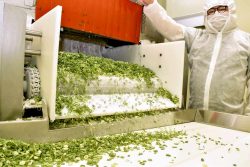
Frozen Vegetables: Demand Rises for Convenient, Tasty Domestic Produce
JN ACCESS RANKING
-

Keidanren Chairman Yoshinobu Tsutsui Visits Kashiwazaki-Kariwa Nuclear Power Plant; Inspects New Emergency Safety System
-

Imports of Rare Earths from China Facing Delays, May Be Caused by Deterioration of Japan-China Relations
-

University of Tokyo Professor Discusses Japanese Economic Security in Interview Ahead of Forum
-

Japan Pulls out of Vietnam Nuclear Project, Complicating Hanoi’s Power Plans
-

Govt Aims to Expand NISA Program Lineup, Abolish Age Restriction






















